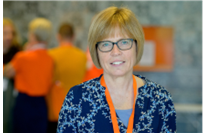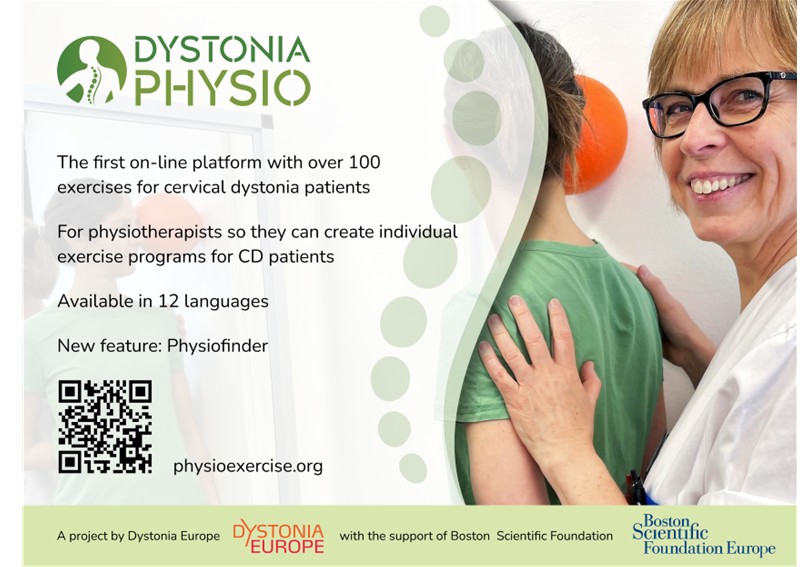As you were previously informed, in 2021, in collaboration with Dystonia Europe, I launched a digital platform, the Dystonia Physio Exercise Hub, with over 100 exercises for cervical dystonia. It has since become available in 12 different languages, and the exercises are accompanied by models or animations. Only physiotherapists can register on the platform to access the closed page with all the exercises and the possibility to create home exercise programmes. The patient is recommended to see a physiotherapist with knowledge of dystonia. The physiotherapist can then, after careful analysis of the individual dystonia pattern and the current problems, select exercises for the home exercise programme. This becomes visible to the patient through a personalised code, which is entered on the public side of the platform using mobile, tablet or computer. The building and updating of the platform is sponsored by the Boston Scientific Foundation Europe, which made it possible to offer it at no cost to users or healthcare providers.
Currently, there are over 500 physiotherapists registered on the platform, from 29 countries worldwide. Almost 130 of them are Swedish physiotherapists.
The platform is under constant development and now there is also a “physio finder”, where you can search for a physiotherapist active on the platform based on your home town. Those who are searchable are only those who have authorised it, and not all have done so for various reasons. On the public page, you can also see a
demo with examples of exercises, and a video where a patient with cervical dystonia talks about his experience of the platform. The platform will get a new, clearer design in the spring, and for physiotherapists some educational videos.
I (together with the patient associations) have organised regular workshops on dystonia for physiotherapists in Sweden, but also in Norway, Denmark and Finland for many years. With the platform, the knowledge gap is becoming more obvious, and more countries in Europe are starting to ask for this type of training. In October, I held a workshop in Newcastle upon Tyne, England, co-organised with the European dystonia association.

Physiotherapist Johanna Blom
Doctors and physiotherapists from Sweden and the rest of Europe are increasingly getting in touch to establish collaborations to deepen and spread knowledge about dystonia, which increases the possibility of more radical changes and equal care.
I am also pleased to announce that my book ‘Muscles in Imbalance-Cervical Dystonia and Spasticity’ is being translated into English. The book is mainly aimed at physiotherapists, but also other health professionals. The translated updated version will be published by the end of the year.
The main part of the above-mentioned projects focuses on cervical dystonia on the basis that it is the most common form of dystonia and that there is the most scientific material and proven experience regarding this type of dystonia. I also believe that understanding cervical dystonia and its treatment strategies is the basis for analysing and treating other forms of dystonia as well. In Sweden, this spring we will organise for the second time a step 3 course, focusing on complicated cervical dystonia, but also other forms of dystonia.
Johanna Blom, Physiotherapist at the Neurology department,  SUS Malmö
SUS Malmö
